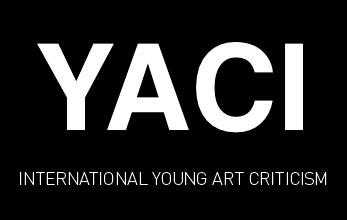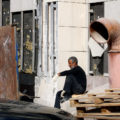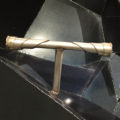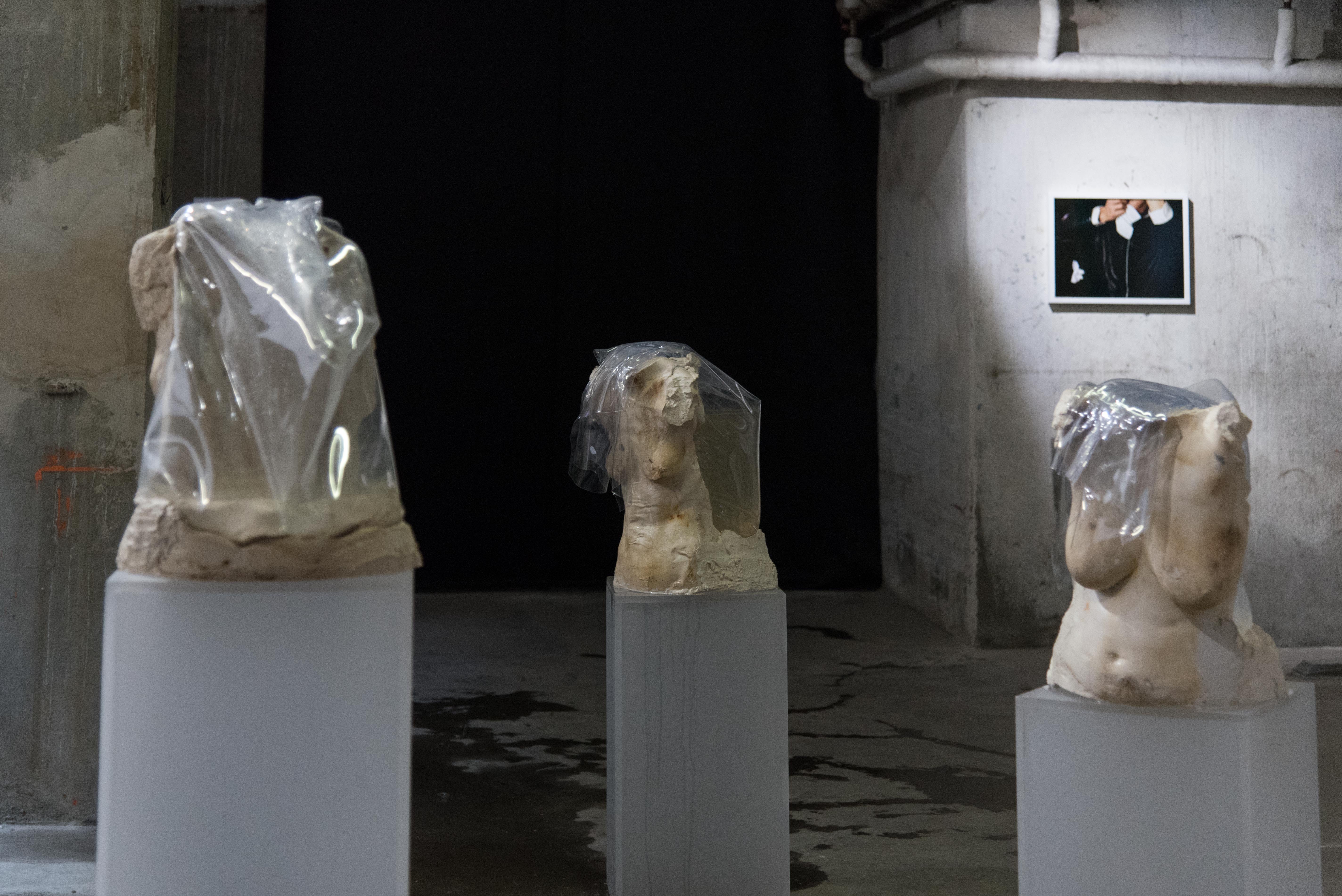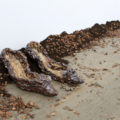Mathilde Supe, You can’t run from images
A young man and a young woman appear on the screen. They probably met on Tinder. Or is it an arranged date? They meet in a bar, order a pint, chat, shy and quiet. They talk, look at each other, and go dancing. Of course, they end up kissing. The images are beautiful, licked and seductive. The fall is a foregone conclusion. Easy? Really?
The date, indeed, was indeed arranged, by Mathilde Supe, for the Salon de Montrouge 2019, and by the team she surrounded herself with to compose the film You can’t run from love. It was also arranged by the clichés, firmly rooted in the collective imagination, which fixed the way in which a first meeting should take place. Carried by cinema, television and the media, which together create and feed common places and “grand finals”, these shots are the form and content of the video diptych imagined by Mathilde. The young man is manly and protective, he is in charge of leading the discussion. The hesitant young woman is afraid to say too much or not enough. Next to the screen, where the romance scene is played, sentences scroll on a television with a black background. In white letters, small or capital letters, short or more developed, they describe sometimes what is visible – the behaviour of future lovers – sometimes what has been hidden – the shooting secrets of the scene or the way it was composed – sometimes finally what is usually read elsewhere, in sociology books in particular – notions that explain more general behaviours replayed by the two actors.
Three levels of reading are skillfully balanced by the artist, videographer, director, conductor, director, and potential sociologist since she resumed her studies at the École des Hautes Études en Sciences Sociales, in media sociology. The words are used as crutches for the images, which are also quite banal and already seen from the first meeting. They were carefully chosen by Mathilde and Elina Gakou-Gomba, the scriptwriter she chose to help her write incisive, punchy sentences, like an advertising slogan. Apparently as simple as the images they comment on, they are the result of a real balancing act. On the thread of words, more or less crude truths – also more or less arbitrary – try to advance to the mind of who reads them. First of all, anodines, impossible to contradict because written by the hand of the omniscient narrator who gave life to the characters, they become more complex until they copy notions of sociology, psychology or neurology selected by the artist. They then have an ambiguous status. Authoritarian, they pretend to be the truth, the one spoken by the teacher, the pedagogical voice and the omnipotent. They deconstruct the so-called simplicity of images by imposing on them a reading, the right one because the scientific one, validated by books. However, from the moment they disappear from the screen, they encounter multiple, sometimes contradictory echoes in the reception made by each of them. If Mathilde and Elina made them so powerful, it is precisely so that everyone can project their own fantasies. Exactly in the same way as an advertising slogan would work, designed to reach the widest possible audience but also to deal with everyone’s preconceptions, habits of thought (or not), the sentences that scroll on the screen impose a reading that tries to contain all those possible.
Mathilde realized Cruel Park between 2015 and 2017. Halfway between blockbuster, western and compulsive zapping, the film depicts the quest of a young man and woman who, lost on a Mediterranean island, try to find each other. The rare dialogues are strange, the two actors talk to each other but do not answer each other. They are next to each other but do not see each other. These are images that do not stick, that could have shown the way, but that only lose more and more the actors and actresses, and the spectators. The film deploys a maze of data from the Internet, television or advertising, clips or Youtube tutos. All of them portray the ideal of a hyper-regulated and controlled self, whose mediums hear what it should look like, how it should behave, towards what it should tend and what it should desire. Cruel Park is a series of these images for an hour and a half, with no real scenario. There are not strictly speaking actions, but a succession of sequences in which it is impossible not to get lost in turn. Mathilde admits it herself, this film is a bit boring to watch.
In making it, she wondered if a film that was just an envelope of films would still work. Looking back, she realizes that everything she wants to explore now is already contained in Cruel Park. The woman and her staging, conscious or not, are omnipresent, as are the tension and the – inevitable – imbalance between words and things. An image and idea box, it is the place for a formal exploration for the young videographer; it has become the basis for an exploration and shaping of content.
Since Cruel Park, Mathilde has taken on the responsibility of loving beautiful images, those that immediately seduce the eye because they shape an ideal world in appearance, those that make you want to buy, to look like, to become like. At the Beaux-Arts, she was told that such images lacked depth. Advertisements, vanities, forever destined to be smooth and superficial, incapable of constructing a discourse that is even remotely interesting. Is there only one form allowed to bring out matter? Sad injunctions that cannot help but ask questions of legitimacy. So how do you find your place? And why settle for a place at all? I did not study art but I found the same mechanism during my studies, which were also very academic. In the humanities or art history, a text that is too literary has no (real) place. To be a researcher recognized by your peers, you have to speak jargon.
Mathilde, on the other hand, succeeded, as she could, in emancipating herself. Because among artists, she feels elsewhere, and among sociologists, professors, political refugees or students, she is more than ever an artist, because she is a practitioner. Her formal explorations have spread the soil of her new textual explorations. She has chosen to unite form and content. Mathilde’s visual assertions are beautiful and accurate. They are pleasant to look at. In front of them, we have a good time. Mathilde seduces, educates and gives her spectators the tools of emancipation that she has learned to use to find a place of her own. She comments and deconstructs herself, in the hope that what she has observed, learned and transmitted can enable her audiences to take responsibility for themselves and in turn emancipate themselves.
Mathilde Supe, You can't run from love, 2019, HD video, colour, 9 min. with Pauline Parigot and Charles Van De Vyver ; picture : Théo Sixou and Victor Peressetchensky ; editing : Antoine Plouzen Morvan ; music : Olivier Bettendorff ; light : Baptiste Joxe ; mixing : Clément Mancheron ; script : Mathilde Supe and Elina Gakou-Gomba), Courtesy Mathilde Supe.
Mathilde Supe, Cruel Park, film, video installation and interactive platform, 2015-2017, HD video, 1 h 20 min. (with Valentine Basse, Théo Comby Lemaitre, Gregor Daronian, Nina Villanova, and the actors of the ERACM ensemble 23, Regional School of Actors of Cannes-Marseille; image: Mathilde Supe; editing: François Duverger; his Clément Mancheron; music: Arthur Lavandier), Courtesy Mathilde Supe.
